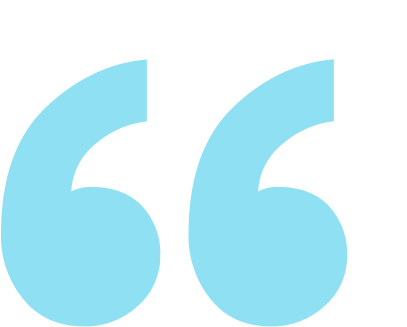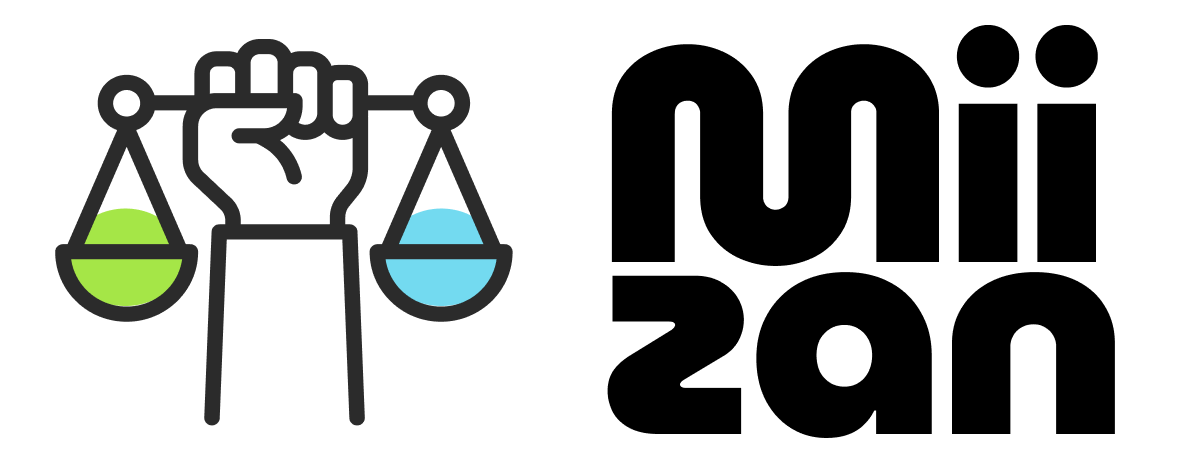
How to Track Life Balance: Metrics That Actually Matter
Why life balance isn’t about equal hours—and the key metrics you should track instead.
The Balance Myth That's Keeping You Stressed
When most people think of "life balance," they picture a perfect 8-8-8 split: eight hours of work, eight hours of sleep, eight hours of everything else. Or perhaps they imagine a pie chart with perfectly equal slices for every aspect of life.
Here's the truth: that's not balance—that's mathematical impossibility.
Real balance isn't about equal hours. It's about intentional alignment with what matters most to you, measured through metrics that actually reflect how you feel and function in your daily life. This approach is backed by research from over 40,000 individuals across 21 countries, showing that multidimensional well-being measurement provides insights that single metrics simply can't capture.
As research shows, "well-being is a multidimensional construct, and cannot be adequately assessed" using simple, single measures.
If you've ever felt frustrated trying to achieve "perfect balance," you're not alone. The problem isn't your lack of discipline—it's that you're measuring the wrong things.
Why Traditional Life Balance Assessment Methods Fall Short
Many balance frameworks serve valuable purposes, but they weren't designed specifically for day-to-day tracking and measurement.
The Wheel of Life: Great for Reflection, Limited for Tracking
The classic "Wheel of Life" excels at helping you reflect on different life areas and rate your satisfaction from 1-10. It's excellent for annual reviews and identifying areas that feel neglected.
However, for daily balance tracking, it has limitations. It relies on subjective ratings without connecting to how you actually spend your time. You might rate your health as a 7, but that doesn't tell you if you're getting enough sleep or movement.
Comprehensive Category Systems: Thorough but Complex
Some frameworks use 11+ detailed categories: career, finances, health, family, romance, friends, environment, recreation, personal growth, contribution, and spirituality. These comprehensive approaches capture life's complexity beautifully.
For ongoing measurement, though, managing this many categories can become overwhelming. Plus, life doesn't happen in isolated buckets—when you cook dinner with family, you're simultaneously nourishing your health, strengthening relationships, and potentially finding joy.
A Framework Built for Daily Balance Tracking
For consistent measurement and course correction, we need something designed specifically for that purpose: a framework that's comprehensive enough to capture life's richness, yet simple enough to use daily.
Enter the four-pillar model—four foundational areas that capture the essence of a well-lived life:
1. Work (Career, Income, Productivity, Learning)
Your professional life, household responsibilities, skill development, and productive contribution to the world.
2. Health (Sleep, Exercise, Nutrition, Self-Care)
Your physical foundation—the energy and vitality that makes everything else possible.
3. Relationships (Family, Friends, Community, Love)
Your connections with others—the bonds that provide meaning, support, and joy.
4. Inner Growth (Meaning, Reflection, Spirituality and Gratitude)
Your inner life—the practices that provide perspective, purpose, and peace.
Unlike rigid categories, these pillars acknowledge that activities can span multiple areas. That dinner with family? It counts toward both Health (nutrition) and Relationships (connection). This overlap isn't a bug—it's a feature that reflects how life actually works.
Best Metrics for Measuring Life Balance: What Actually Works
Now that we have a framework, what should you actually measure to track life balance effectively? Leading well-being researchers emphasize that "well-being goes beyond hedonism and the pursuit of happiness or pleasurable experience, and beyond a global evaluation (life satisfaction): it encompasses how well people are functioning."
Here are the four essential life balance metrics that provide real insight into your daily balance:
1. Time Distribution for Work-Life Balance (But Not How You Think)
Yes, track your time—but not to achieve equal hours across all life areas. Instead, aim for proportional balance that reflects your values and life stage in your work-life balance assessment.
A healthy life balance baseline might look like:
Health: ~50% (including 8 hours of sleep, meals, exercise, self-care)
Work: ~30% (professional work, household tasks, learning)
Relationships: ~6-13% (adjusted for your living situation and social needs)
Inner Growth: ~7% (reflection, creativity, spiritual practices)
Flex time: ~7% (adaptable based on current needs, including transportation)
Notice that Health gets the largest allocation—just like vegetables should fill half your plate, activities that sustain your physical and mental foundation deserve the most time in your life balance assessment.
2. Daily Mood Tracking and Life Balance Patterns
Track your daily mood on a simple scale to measure life balance effectiveness. The magic happens when you connect mood data to your time allocation for comprehensive life balance assessment.
Research shows that mood reflects two different types of well-being: immediate happiness (from enjoyable activities) and deeper fulfillment (from meaningful activities). Pay attention to both:
Do you feel more energized on days with at least 30 minutes of inner growth activities?
Does your mood dip when work exceeds 60% of your waking hours?
Are you happiest on days that include social connection?
Do challenging but meaningful activities leave you feeling accomplished even when they're not "fun"?
These patterns reveal your personal balance formula - some people need more immediate pleasures, others thrive on meaningful challenges, and most need both.
3. Stress and Energy Assessment for Work-Life Balance
Daily check-ins on stress (tense vs. at ease) and energy (charged vs. depleted) provide crucial insight into how to measure life balance effectively:
Stress tracking helps you identify when life feels overwhelming—often a sign that one pillar is dominating at the expense of others.
Energy tracking reveals which activities fuel you and which drain you, allowing you to make more intentional choices.
4. Life Balance Fulfillment and Purpose Metrics
Ask yourself regularly: "Did today feel meaningful?" This qualitative life balance metric captures something time tracking alone cannot—whether your hours aligned with your deeper values in your work-life balance assessment.
You might spend the "right" amount of time on each pillar but still feel unfulfilled if the specific activities within those pillars don't resonate with your authentic self.
Why Work-Life Balance ≠ Equal Hours
Here's a crucial insight: balance isn't about equality—it's about sustainability and alignment.
Think of balance like nutrition. A healthy meal isn't equal portions of every food group. It's thoughtful proportions that nourish your body. Similarly, life balance is about thoughtful proportions that nourish your whole self.
Research on well-being confirms that "well-being has been linked to success at professional, personal, and interpersonal levels, with those individuals high in well-being exhibiting greater productivity in the workplace, more effective learning, increased creativity, more prosocial behaviors, and positive relationships."
Some days, work will naturally expand—during project deadlines or busy seasons. Other days, health might take priority during illness or injury. Relationships may require more focus during family crises or celebrations.
The goal isn't rigid adherence to percentages but rather:
Awareness of how you're actually spending your time
Intentionality about whether those choices align with your values
Course correction when you notice persistent patterns that drain rather than sustain you
How to Start Tracking Life Balance: Practical Steps
Ready to begin measuring life balance with metrics that actually matter? Here's your step-by-step action plan for effective life balance assessment:
Week 1: Establish Your Baseline
Track your time for one week across the four pillars. Use a simple app, spreadsheet, or even paper.
Daily mood check-in: Rate your mood, stress, and energy on a 1-5 scale each evening.
Note overlapping activities: When cooking with family or walking with a friend, count it toward multiple pillars.
Week 2: Identify Your Patterns
Calculate your average time distribution across the four pillars.
Look for mood correlations: Which days felt best? What was different about your time allocation?
Spot energy drains: Which activities or time patterns left you feeling depleted?
Week 3: Make One Small Adjustment
Choose one insight from your tracking (e.g., "I feel better with morning reflection time").
Implement a small change (e.g., 10 minutes of journaling before checking your phone).
Continue tracking to see if the adjustment improves your metrics.
Week 4: Refine and Personalize
Adjust your ideal baseline based on what you've learned about yourself.
Identify 2-3 non-negotiables—the minimum amounts of each pillar that keep you feeling balanced.
Plan for flexibility: How will you handle busy seasons while protecting your core needs?
Best Tools and Resources for Life Balance Tracking
While you can track life balance with simple tools, dedicated life balance apps can automate much of the process and provide deeper life balance assessment. Here's what to look for in effective life balance tracking solutions:
Modern Life Balance Apps Like Miizan
The most effective approach combines automated tracking with meaningful insights. Miizan, for example, is specifically designed as a comprehensive life balance tracking app that:
Automatically integrates with your calendar, health apps, and screen time to map activities across the four life pillars
Provides real-time balance dashboards showing how your time is distributed across Work, Health, Relationships, and Inner Growth
Tracks mood, stress, and energy alongside time data to reveal patterns between your activities and well-being
Offers personalized insights like "Your energy tends to dip when work exceeds 50% of your day" or "Your mood improves with at least 30 minutes of inner growth time"
Calculates balance scores based on your personal baseline, not arbitrary equal-time expectations
Includes gentle coaching with actionable nudges for course correction without judgment
Key Features to Look for in Life Balance Tracking Apps
Passive data sync from calendars and health apps to reduce manual input
Four-pillar framework that recognizes activity overlap (like family dinners counting for both Health and Relationships)
Customizable baselines that adapt to your living situation, work style, and life stage
Mood and energy correlation to connect time allocation with how you actually feel
Visual progress tracking with balance wheels, trend graphs, and progress bars
Privacy-focused design with local data storage and user control
Manual Tracking Alternatives (Why They Often Fall Short)
While you can attempt life balance tracking with simpler tools, most people find these approaches unsustainable:
Spreadsheet templates for tracking time across the four pillars - but manual data entry becomes tedious and time-consuming
Journal prompts for daily mood, stress, and energy assessment - easy to forget or skip when life gets busy
Weekly review templates for analyzing your life balance patterns - without daily data, patterns are hard to spot
Balance wheel worksheets for visual life balance assessment - static and don't capture the dynamic nature of daily balance
The reality is that manual tracking requires constant effort and discipline that most people can't sustain long-term. After trying spreadsheets and journals myself, I found that having an app that automatically captures and analyzes this data makes the difference between good intentions and actual insight into your life balance patterns.
The key is finding a system that provides meaningful insight into your life balance without becoming another source of stress. Purpose-built life balance apps like Miizan offer the most comprehensive approach, automatically tracking the metrics that matter while providing personalized guidance for sustainable balance.
The Long View: Balance as a Practice
Remember, balance isn't a destination you reach—it's a practice you cultivate. Your ideal balance will shift with life seasons, personal growth, and changing circumstances.
As research on multidimensional well-being shows: "Well-being is perhaps the most critical outcome measure of policies. Each individual dimension of well-being as measured in this study represents a component linked to important areas of life, such as physical health, financial choice, and academic performance."
The metrics that matter most are the ones that help you live with greater awareness, intention, and alignment with your authentic self. Start simple, track consistently, and adjust based on what you learn about your own patterns and needs.
Perfect balance is a myth. Intentional life balance is a skill you can develop, one day and one small adjustment at a time. Start with one metric today, and begin building the awareness that transforms good intentions into sustainable life balance.
FAQs About Life Balance Metrics
What are the best life balance metrics to track daily?
Time distribution, mood, stress/energy, and fulfillment.
How do you measure work-life balance effectively?
Track proportional time across pillars, connect to mood/energy, and check alignment with values.
What percentage of time should be spent on work vs. personal life?
Work ~30%, Health ~50% (including sleep), Relationships ~6–13%, Wellbeing ~7%, Flex ~7%—but adapt to your life stage.
How can I track life balance without it becoming overwhelming?
Start with mood tracking, add time tracking for one week per month, and use automation where possible.
What’s the difference between life balance and work-life balance?
Life balance spans Work, Health, Relationships, and Wellbeing. Work-life balance focuses only on professional vs. personal time.
Can life balance metrics help prevent burnout?
Yes—tracking energy depletion, stress levels, and pillar imbalances provides early warning signs.
Ready to start tracking your life balance with a framework designed around what actually matters?
Discover how modern tools can automate the process while providing deep insights into your personal balance patterns.
Features you'll love
Balance isn’t just work vs. life—it’s about aligning all parts of your day with what matters most.
Why equilibrium—not fragile balance—is the real foundation for a meaningful life.
Why the next generation of wellness apps will focus less on steps and more on self-awareness.

“ To track is to own your journey”
Liam Rogers



